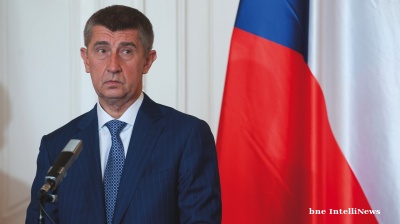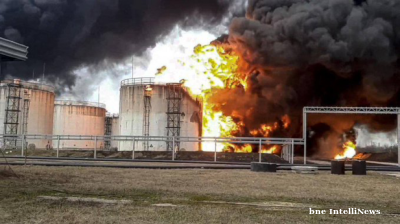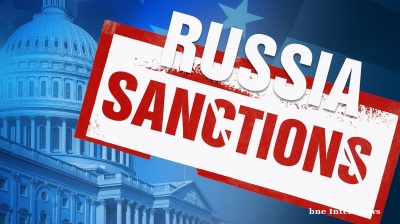Since the outbreak of the war in Ukraine, military spending has grown practically everywhere in Europe, but nowhere as much as in Poland, where it expanded by 75 per cent between 2022 and 2023.
In 2024 Poland became the 14th largest military spender in the world and the third largest in the European Union, after France and Germany. With its 2024 defence budget reaching $38 billion, 4 per cent of its GDP, Poland spends now more on defence than wealthier and more populous nations such as Italy or Spain.
Poland’s defence investment and its central position vis-à-vis Ukraine are contributing to the growth of Poland’s status in the EU. In addition, following the election in October 2023, Poland became the first nation in Europe to effectively defeat populists and embark on reinstating the rule of law.
What motivates Poland’s defence investment?
The reasons for this hike in defence spending are obviously linked to the ongoing war in Ukraine, with which Poland shares its longest Eastern border. Poland is therefore directly exposed to the war’s impact to a much greater degree than it is the case for the rest of the EU.
The Polish city of Rzeszow became the main hub for the delivery of Western military aid, which makes it a potential target for a Russian attack. The Polish airspace has been violated on several occasions with at least three registered instances of Russian missiles landing on Polish territory. In addition, Belarus, a Russian ally with which Poland also shares a long land border, has opened its territory to host Russian nuclear weapons and has been waging hybrid warfare by importing migrants and encouraging illegal border-crossings to Poland.
The apparent and tangible Russian threat is also triggering reactions related to Poland’s Nato obligations and Warsaw’s relationship with the United States. Poland’s regional vulnerability fuels the perception that Warsaw must travel an extra mile to demonstrate an example for the entire alliance and to be perceived as a model ally. With much of the new military hardware procured by Poland coming from the US, many in Warsaw believe that the relationship with its American partner is now solidified by a commercial dimension.
Will Poland play a bigger role in the EU?
Poland’s centrality to Western strategy vis-à-vis Ukraine and Russia and the election of a pro-European government in October 2023 mean that Warsaw has its “five minutes” now. If used effectively, the current momentum could help Warsaw’s status in the EU and its ambition for regional leadership. Since the new coalition assumed the office in December 2023 it has already been awarded with the EU decision to release €137bn in funds (both covid recovery and cohesion), which were blocked because of the former government’s violations of the rule of law.
Poland’s diplomatic status was also immediately pushed up into the premier league. After the years of side-lining, Poland’s prime minister is now a sought-after guest in major European capitals. Most importantly, the Weimar Triangle – a format that brings together Berlin, Paris and Warsaw – has been revitalised, resulting in a frenzy of trilateral meetings at various governmental levels.
The key topic within the Weimar Triangle consultations is Ukraine and European security and defence. Poland’s unprecedented defence investment and its role vis-à-vis Ukraine equalises the playing field in this format, which otherwise is deeply asymmetric.
Under the current conditions, with war raging in Ukraine and Russia threatening Europe’s security, Poland is simply indispensable for both Berlin and Paris. For now, Donald Tusk’s government has been skilfully using these perceptions to advance Poland’s bid for joining the group of core powers that decide about the general direction of the EU.
Risks and vulnerabilities
Whilst Warsaw is undoubtedly enjoying its five minutes of fame, there is no doubt that there are several risks on the horizon that may complicate its ambitions. These are related to domestic politics, industrial interests, growing Ukraine fatigue and expectations management.
Politically Poland remains a very divided country and the populist Law and Justice (PiS) party, which governed between 2015-2023, enjoys a strong following with a dominant position in the east of Poland and in much of the countryside. The recent local elections, held on the 9th of April, confirmed that nationally PiS remains the strongest single party, attracting 34% of votes.
The remaining popularity of Law and Justice and the conservative attitude of many Polish voters affects Tusk’s government’s position on some aspects of EU reforms, including treaty revisions, the migration pact, and the Green Deal. On all these aspects Tusk’s government is choosing a cautious or conservative line.
Meanwhile, Poland’s role championing Ukraine may be affected by changing attitudes within Polish society. After serving as the first port of call for Ukrainian refugees and the main land transit route for Ukrainian exports, there is an element of Ukraine-fatigue setting in, which is unsurprising given the numbers.
More than 6 million Ukrainian refugees entered Poland since the war started, of which 1 million stayed, adding to an estimated 1.5 million that had arrived and settled in Poland prior to the invasion. The refugees were granted citizenship-like status with full access to state healthcare, education and social programmes, costing the state around €8-9bn annually.
Since the summer of 2023 Polish farmers have been protesting against the uncontrolled import of grain and other agricultural products from Ukraine. In autumn of 2023 the farmers were joined by lorry-drivers blocking the border who were protesting against competition from Ukraine. According to recent polling of the European Council on Foreign Relations (ECFR), more Poles now see the arrival of Ukrainians as a threat (40%) than an opportunity (34%), which represents a major turnaround in public attitudes.
Finally, there is also a problematic industrial dimension for Poland’s rearmament. Most of the new armament acquired by Poland is procured outside of the EU, in the United States and Korea. Whilst this is understandable because the current security needs require urgent rearmament with equipment that is both technologically superior and available, long term this choice of suppliers may raise questions as to Poland’s ambition to act as one of the leaders of the EU defence dimension.
According to the European Defence Industrial Strategy (EDIS), member states should be procuring not less than 50% of their defence orders inside the EU by 2030 and 60% by 2035. The target is very steep considering that currently only 18% of member states orders are procured inside the EU. Poland’s major shopping spree in the US and Korea is not contributing to the fulfilment of the EDIS’s goals.
As they stand the EU ambitious targets would be particularly beneficial to the French and German defence industries. Poland and other member states with a legacy of the Soviet bloc lack major industrial champions able to compete on the international market.
Future of Poland’s defence policy
Despite the vulnerabilities as highlighted above, Poland’s defence policy is likely to remain solid and as such it will serve as an asset in raising Warsaw’s profile in the EU. Although Poland is politically a very divided country its defence policy is one of the areas of unheralded consensus. For example, the current government has not cancelled any of the defence contracts that were launched by the former administration.
The defence plans envisioning the steady growth of the armed forces, including a robust reserve force, also represent an element of continuity, as does Poland’s strategic choice to maintain a close security relationship with the United States. Even prior to the outbreak of the war in Ukraine, Poland hosted 5000 US troops and this number currently has expanded to 10 000 troops. The current government is as keen to keep a robust US military presence as the former was. Finally, a strong investment in security and defence enjoys genuine public support in Poland. No serious political formation is questioning the current level of defence spending.
However, whilst Poland is likely to remain one of the strongest defence players in Europe, its ability to use this argument effectively to advance its agenda and general position in the EU will be tested by domestic vulnerabilities and dynamics within the Weimar Triangle.
Marcin Zaborowski is Policy Director, Future of Security Programme, at Globsec
Opinion

COMMENT: ANO’s election win to see looser Czech fiscal policy, firmer monetary stance
The victory of the populist, eurosceptic ANO party in Czechia’s parliamentary election on October 6 will likely usher in a looser fiscal stance that supports growth and reinforces the Czech National Bank’s recent hawkish shift.

COMMENT: Ukraine's drone attacks on Russian refineries have probably reduced throughput by 30.4%, less than headline figures suggest
Ukraine has been hitting Russian refineries and caused a fuel crisis that has spead across multiple regions. The headline figure is that oil refining has been reduced by 38% since August, but digging into it and the reduction is likely less.

MACRO ADVISORY: The unintended consequences of Western sanctions
Since 2014, Western nations have hit Russia with a total of 26,655 sanctions (to mid-September 2025), with 23,960 coming after February 2022. The largest target group, with 13,611 sanctions, is state officials, business owners, and oligarchs.

PANNIER: Few will mourn passing of Turkmen Iron Lady Atajanova and Uzbek Grey Cardinal Jurabekov
Their deaths seem to have been conveniently overlooked for the most part by the authorities of today.
_Cropped_1759411324.jpg)
_WIKI_COMMONS_Cropped_5.jpg)


